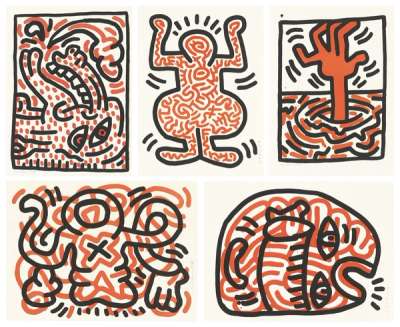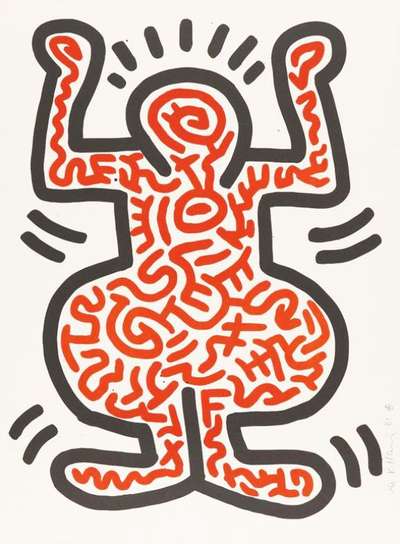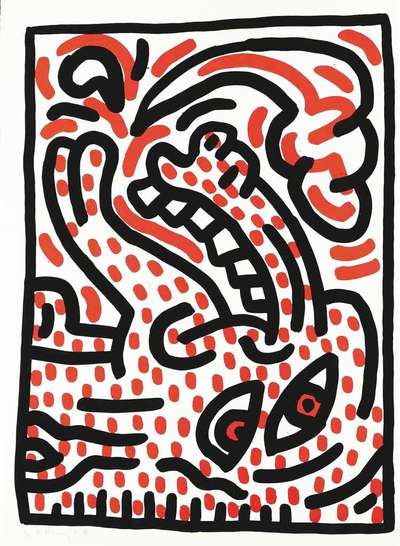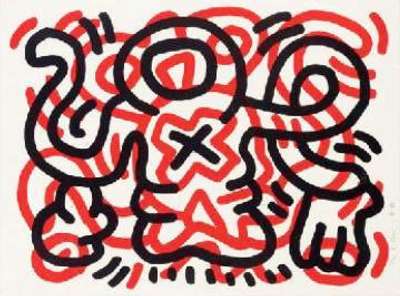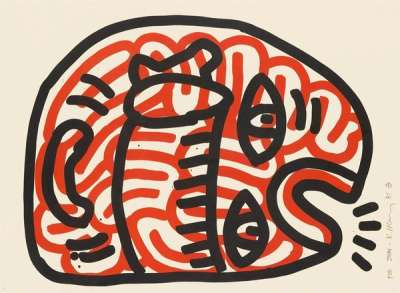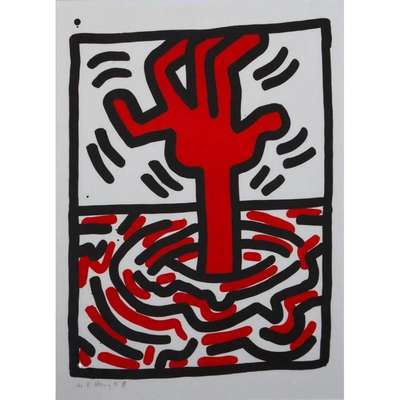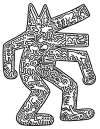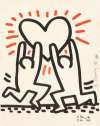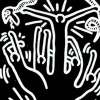Ludo
Keith Haring’s 1985 Ludo contains five lithographs that depict body parts, figures, and a monster, all rendered in a style influenced by Aboriginal art. The figures are outlined clearly in black ink but are shaded with crazy red linework, giving them, on the whole, an abstract, frenzied atmosphere.
Keith Haring Ludo For sale
Ludo Value (5 Years)
Works from the Ludo series by Keith Haring have a strong market value presence, with 47 auction appearances. Top performing works have achieved standout auction results, with peak hammer prices of £63000. Over the past 12 months, average values across the series have ranged from £38101 to £38101. The series shows an average annual growth rate of 11.02%.
Ludo Market value
Auction Results
| Artwork | Auction Date | Auction House | Return to Seller | Hammer Price | Buyer Paid |
|---|---|---|---|---|---|
 Ludo (complete set) Keith Haring Signed Print | 3 Jun 2025 | Van Ham Fine Art Auctions | £29,750 | £35,000 | £50,000 |
 Ludo 5 Keith Haring Signed Print | 3 Oct 2023 | Bonhams Los Angeles | £6,375 | £7,500 | £9,500 |
 Ludo 2 Keith Haring Signed Print | 28 Oct 2020 | Forum Auctions London | £6,375 | £7,500 | £9,500 |
 Ludo 3 Keith Haring Signed Print | 13 Apr 2016 | Expertisez.com | £2,338 | £2,750 | £3,400 |
 Ludo 1 Keith Haring Signed Print | 13 Jun 2015 | Ketterer Kunst Hamburg | £2,763 | £3,250 | £4,800 |
 Ludo 4 Keith Haring Signed Print | 22 Nov 2014 | Arthema Auction | £1,700 | £2,000 | £2,400 |
Sell Your Art
with Us
with Us
Join Our Network of Collectors. Buy, Sell and Track Demand
Meaning & Analysis
5 striking lithographs by Keith Haring created in 1985, Ludo is made up of figural images in his iconic linear style and with frenzied lines The series is made up of figural images depicted in the Pop artist’s iconic linear style and frenzied lines. Each print is set against a plain white backdrop, and a frenzy of red lines fill the dark outlines of the figures across the series, working to produce abstract and ambiguous images.
The Ludo series is reminiscent of Aztec or Aboriginal art through Haring’s use of flowing, organic shapes and thick bold lines to create a pattern that plays out across the image surface. Explaining why many of his works resemble Aztec or Aboriginal art, Haring has said “My drawings don’t try to imitate life; they try to create life, to invent life,” something that he believed aligned with so-called primitive ideas. The Ludo series is exemplary of this notion by forming a rhythmic, kinetic set of compositions that focus on pattern rather than realism.
Throughout the Ludo series, Haring maintains a dominance of the colour red, depicting eyes, limbs, and other body parts in abstracted forms. There is a sense of anxiety running through each print that differs from much of his earlier work, alluding to a turning point in Haring’s life. Reminiscent of Haring’s Apocalypse series from 1988, this series provides the viewer with a hellish visual narrative showing eyes, limbs and other body parts in abstracted forms. Depicted in bold lines, gestural marks and bright red colour, the Ludo series brings together a set of dynamic images that evoke a sense of chaos and violence. Indeed, this series marks a moment of transition for Haring. As the AIDS epidemic overtook his community in the mid-1980s, Haring’s artwork reflected his increasing involvement in advocacy for the disease.
